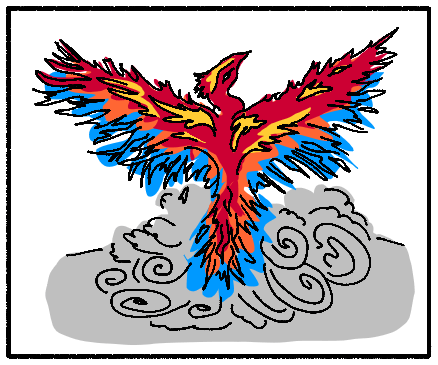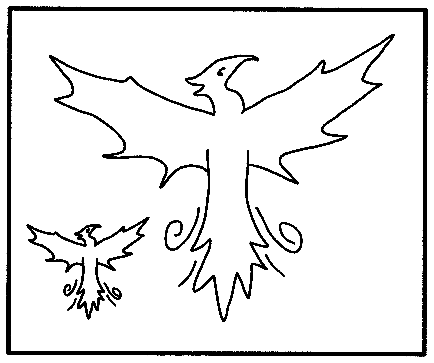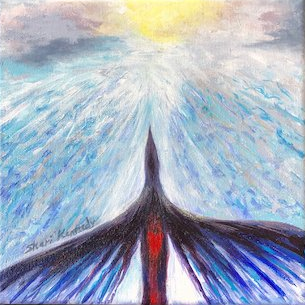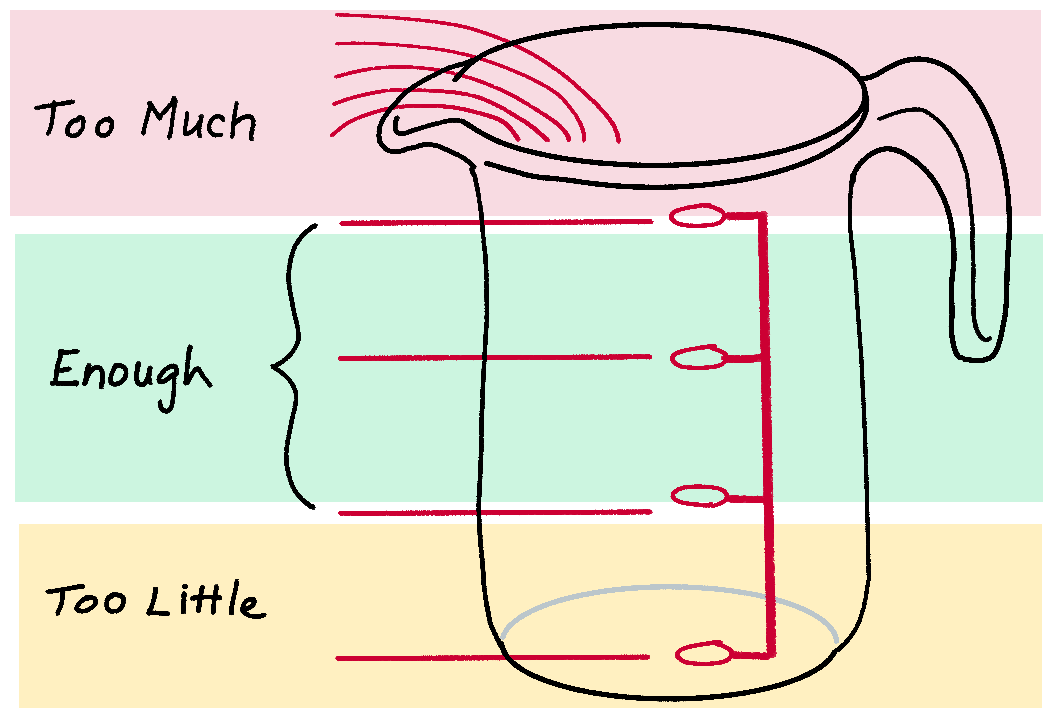From Fine Art to Icon
The Art of Applied Visual Thinking
Debbie and I started Applied Visual Thinking because we know visual thinking is a skill any (sighted) person can learn, even with little to no background in art. But what if you are already a visual artist who wants to learn to use visuals in a new way? If the Pictionary timer often runs out while you are still adding details, then read on, my friend.
In my other life, I paint. I used to see my fine art painting as totally separate from my visual thinking drawing. Now I am beginning to see how they can feed into one another.
In 2020, I painted a series of small canvases based on five natural elements — earth, wind/air, fire, water and metal. In this wind/air painting, I tried to imagine what blowing wind or moving air might look like. This led me to the feeling of flying. The image that emerged started to look like a bird in flight. I enhanced the imaginary bird, added a few details, sun and horizon.
A friend saw the wind/air painting. She commissioned me to paint a similar painting to look more phoenix-like for a mutual friend. The phoenix is a mythical bird that burns itself, then rises again from the ashes.

The motion in this second painting had to be up and outwards versus the forward movement in the first painting. The phoenix painting also needed some kind of land on which I could locate the pile of ashes. Rather than just changing out the bird, I discovered I had to think about the whole image in a different way to convey different meaning.
The phoenix is a mythical bird that burns up, then rises again from the ashes. The motion in this second painting had to be up and outwards versus the forward movement in the first painting. The phoenix painting also needed some kind of land in the on which I could locate the pile of ashes.
The process of starting with one image as a springboard for generation of a second reminds me of our AVT FOUNDATIONS course. In the course, you learn how to draw anything, even complex concepts, starting from simple shapes. Let's turn that idea upside down for a moment. What if we could start from a complex, finished piece of art and simplify it to a simple icon?
To use visuals as a practical tool when working with others, sometimes speed is of the essence. The pace of innovation does not usually allow time for neat, realistic drawing, but organizations NEED creative thinking. For professionals and dabblers in the fine arts, however, how can we ignore what we learned about things like depth, shading, proportion and perspective?
As futurist Alvin Toffler said, “The illiterate of the future are not those who can’t read or write but those who cannot learn, unlearn, and relearn.”
Here I took the challenge to “unlearn” painting and create an icon of a phoenix.




How to simplify from complex image to icon in 4 easy drawings:
Drawing 1: Look carefully at a painting, photo or illustration that inspires you. Sketch the essential elements.
Drawing 2: Remove color and any non-essential pattern, texture or details.
Drawing 3: Smooth out lines and eliminate more detail.
Drawing 4: Use the fewest lines necessary to convey your idea.
What next?
- Create muscle memory by filling a page with your new icon. Aim to draw it the same way every time. The point is to build muscle memory so you can draw it quickly from memory.
- Take 1 minute to file it for future reference. For information about how to start an icon reference library, read our last blog post Visuals and Building a Second Brain Go Hand in Hand.
Ready for more?
Join our AVT FOUNDATIONS course and learn how to grow your visual vocabulary and essential visual thinking tools.
PRO TIP:
Icons can inspire wonderful logos. To make a logo that will stand the tests of time, printability, legibility and translation to various media, use what I call the 1-inch test. Print or view your icon scaled down to one inch actual size. Does it lose important detail? Can you still tell what it is? If not, then SIMPLIFY the until you cannot reduce it any further without losing meaning.

BONUS:
The paintings above are based on air movement. Here are a few ways to draw icons representing wind. You can download a free copy of the handout here. How many more can you think of? What else could these icons represent? Add to your icon library by listing as many icons and interpretations of the icon as you can think of.












